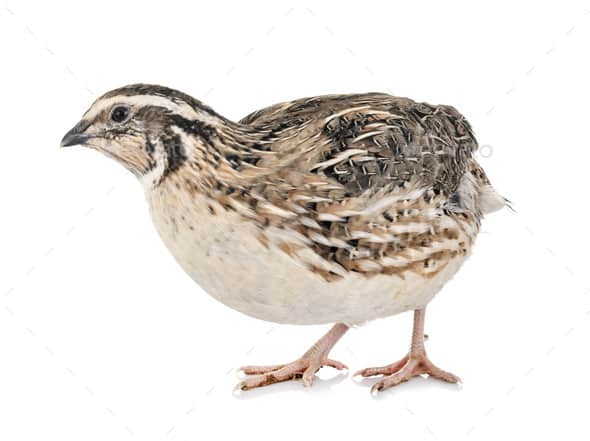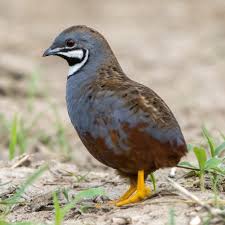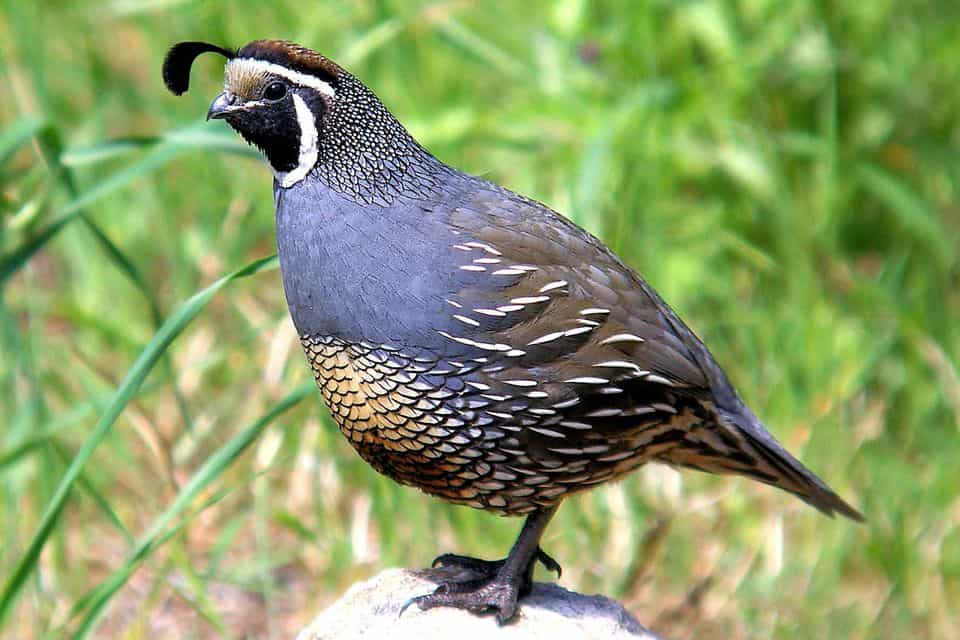
As a quail lover, knowing the best quail breeds for pets and eggs is important to get the best bang for your buck. There are different types of quail breeds. Like about 20 different breeds of wild quail and 70 domestic breeds exist around the world.
Some of the best quail breeds for pets and eggs include:
- Coturnix Quail
- Button Quail
- Bobwhite Quail
- California Quail
- Gambel’s Quail
- Blue Scale Quail
- Texas A&M Quail
There is no much difference in their character traits, although the domestic breeds are said to have lost most of their natural migratory behaviors. Let’s look at them in better detail.
The Natural Life Of Quails
It was observed that quails live in cropland and grassy fields. Quails live on the ground, they feed mostly on grass seeds and small insects. They nest, forage and sleep in the grass. They clean their body by rolling in sand or dust.
They fly away very fast immediately they sense danger. They fly away from their present position into another grass quite far from their previous position. They are rarely seen. Their distinctive calls make them heard but not easily seen.
During winter, quails are usually found living in groups or coveys. They love their privacy but live in pairs during the warmer seasons which is their breeding season. The hens make simple nests from dry grass, which is where they lay their eggs.
Quail Pets
Quail make good pets for both adults and children. They come in different sizes and several different colors.
There are different quail breeds for pets but two are considered the best you can keep. These two include the Button quail and the Coturnix quail. These two are the perfect breeds for pets. Below I’ll talk a little about each of them.
Coturnix Quail (aka Japanese Quail)

These are usually larger than the Button quail. You can say they are medium-sized. They can get up to six inches long and four inches tall. It originated from Asia and Russia, but can be found worldwide.
Just like the Button quail, they also come in different colors and patterns. They don’t only serve companion purposes, they are also good for egg production.
This breed of quail is very tame more than the Button quail. They are quite and very calm. They don’t need much space and are very cordial.
Button Quail (aka Chinese Painted Quail)

This also happens to be the smallest quail breed. This feature contributes to making them perfect as pets. They are said to have originated from Asia, although it is now available in most countries.
The main colors of the Button quail are silver with a blue face and red breast. You will also see some with different variegate of colors. The colors can often be mixed in some.
The button quail can be delicate, so you are advised to handle with care. It is even better not to be handled very often.
The Button quails are definitely pretty and interesting to look at.
4 Awesome Reasons Why Should You Have A Quail As A Pet
Quail are inexpensive, they are easy to house and care for. This makes them perfect to keep as pet.
All quail share the same housing requirements
The bigger the quail the more space it will require to be kept. The button quail take lesser space than the Coturnix quail. You can keep them indoors or outside depending on your choice. Keeping them outside, you have to make sure they are safe from the hot sun, wind, rain, and other health-threatening factors. Some persons move their quail into the garage during extremely cold conditions.
Quail eat grain mix and fresh greens
They also need fresh water daily. Often check up on them to know if they need more feed or water.
You can use pine shaving to lay their bedding as this is the best to be used. You can also use peat moss, a shredded newspaper, or finely chopped hay or grass. Don’t use cedar shaving as it can be harmful to the quail.
Quail have good features that aid them in adaptation
Their life span is usually on an average of 3-6 years. They don’t easily fall sick if they are well taken care of. They molt their feathers once a year. The females start laying eggs from three months of age and can lay eggs almost every day of their lives.
Quail eggs are edible and make a good meal
If you are just keeping them as pets and don’t want their eggs, you can get two females. Two male quail will not get along with each other.
Button quail lay eggs as small as their size while the Coturnix quail lay bigger sized eggs (not so big, but compared to the Button quail eggs).
Any quail raised with regular human attention makes good pets. They will learn to come when you call them and even eat from your hands. They will enjoy sitting on your leg where they can feel your touch steady.
Quail Breeds For Eggs
If you are looking at keeping a quail for egg production, then you are on the best page. Below I will mention the best quail breeds for egg production.
Bobwhite Quail

The Bobwhite quail is one of the most popular quail breeds. They are said to be quite difficult to raise, but they are beautiful to keep. They lay all year round when kept in good conditions. They become make good flight birds within 16 weeks after birth. They start reproducing and laying eggs from 26 weeks after birth. They also taste good and are used to train bird dogs and for hunting.
California Quail (Callipepla californica)

This breed of quail is very beautiful. They have a group of six overlapping topknot feathers. This is the quail breed that normally occurs to people’s heart whenever they think of a quail.
California quails are mostly found in agricultural areas, city parks, and in suburban gardens. They usually spend most of their time searching for food on the ground.
They lay very well and both parents care for the young ones together. They can be kept together in a birdhouse with finches or small parrots.
Gambel’s Quail (Callipepla gambelii)

The Gambel’s quail is mostly patterned in grey, cream, and reddish-brown. The males are the ones usually with a bright red crest. They are good to be kept in a birdhouse. Their mated pairs attack other quail.
They are found in the hot deserts of the Southwest. They are perfect for egg production. The hens call to their chicks before the eggs even hatch. Their eggs hatch simultaneously as if it was planned.
Blue Scale Quail (Callipepla squamata)

They are also known as the cotton-top quail. They live together in large groups in the wild. This is where they form pairs from and break coveys for the breeding period.
Their eggs are usually from irregular light to dark brown spotted. They are good layers and do more better on dry sandy soil.
The Coturnix breed

This breed doesn’t only make great pets, they are also good layers. They can lay up to 300 small eggs per year, but that is if well kept and taken care of. The Coturnix can keep up with most productive chicken layers.
This breed of quail is quite tame. Tamer than the Button quail. They are quite and very calm. They don’t need much space and are very cordial.
Texas A & M quail

Texas A and M Quail are bred especially for meat. They are very easy to clean. They lay eggs earlier than most other quail breeds. The meat is light and tender and is usually ready to slaughter at approximately eight weeks.
Facts About Quail Eggs
Quail breeds start laying eggs early. Their eggs are highly nutritious and have almost the same taste as chicken eggs. You can hardly differentiate the two, especially when cooked. However, quail eggs are about half the size of chicken eggs. So, to make up for one chicken egg, you will need two quail eggs either for cooking or baking.
There is not much of a difference between the nutritional values of a quail egg and that of a chicken egg. They both are about the same thing. Some persons say quail eggs are more nutritious while some others say the reverse is the case.
Guide for Raising Quail for Eggs
It’s very beneficial to raise quail for eggs. They are a very good option when considering laying hens, although they are smaller sized birds than chickens. They produce a reasonable number of eggs just like several other poultry birds.
Quail require less care and management compared to some other poultry birds, and plus they are not very expensive to buy. They also don’t require much food for this level of productivity.
Raising the Best Quail Breeds For Pets and Eggs
Raising of quail for eggs, as companion animals (i.e. as pets) and even for meat is becoming a norm. They are not only kept in rural areas like some other poultry birds, but they are also kept in urban areas. They can serve instead of ducks and chickens. Below, I’ll show you things to consider when thinking of keeping a quail either as a pet or for eggs.
Laws & Regulations
Some countries or states don’t allow people to keep some animals. Some will require a permit before you can own a particular kind of animal. I will advise you to get to know more about the laws and regulations in your area about keeping quail before you can go ahead and keep them.
Select Breed
The same way you have different duck and chicken breeds for different purposes, you also have quail breeds for different purposes as well. The breed of quail you will select is dependent on the purpose or reason why you want to raise the quail. There are different breeds of quail available. There are some good for eggs, some for meat and some as pets just like we mentioned earlier. Some quail breeds also serve a dual purpose.
The Number of Birds
The goal you want to achieve I will say may influence the number of quail you will have to keep. If you are considering raising them for commercial purposes, then the number will have to be more than when you are keeping them for personal and family purposes. A female quail lays an average of 3-4 eggs in a week, while one Button or Coturnix quail is enough as a pet. Basically, the number of birds you keep is dependent on the purpose.
Buying Quail Chicks

You can get quail chicks of different breeds online, from any nearest quail breeder around you or even from pet supply stores around you.
You can also use an incubator to hatch quail eggs. Usually buying fertile eggs and hatching them will cost you lesser than buying the chicks.
Caring for Quail Chicks
Your broader should be ready before you think of bringing back the chicks. You can use a plastic container as the chick broader.
Keep their broader neat and safe. Make provision for feeders and waterer depending on the number of chicks you have. Provide a heat source for the chicks inside their broader. You can use a heat lamp. Check the temperature with a thermometer and be sure it’s at 95° for the first week. Lower the temperature as they mature. It’s best lowered by 5° Fahrenheit each week until the temperature has gotten to normal room temperature.
Caring for Quails
The quails are ready to be transferred into their permanent birdhouse when they are within three to five weeks old. Adult quail usually require more protein-enriched food than other food sources. You can go with the already made quail feed, you can also feed them with layer chicken feed. You can get any of them from the market.
Always make sure they have clean water to drink.
Don’t because quail require little space then pack them together in one birdhouse. They have to be comfortably kept. If you overcrowd them, they may end up being aggravated and may even fight each other.
Cleanliness is very paramount. Keep their cage clean. Separate the male from the female when they are up to six weeks of age. One male serves five to ten females.
Caring for Laying Hens
How you care for your quail determines their laying capacity. If you give them good treatment, they will produce a greater number of eggs than when not properly cared for. Here is a few points on how to care for your laying quail to get the best from them:
Environment:
Make provision for a very suitable environment for your quail. The environment where a quail is kept influences quail production. You can use a cage kept above ground level with an opening below for waste disposal. We will advise you keep the cage away from noise and other animals that may not make good friends with the quail. There should be provision for light and fresh air for the quail. Quail flies, so be sure to keep them in an enclosure that wouldn’t permit them to fly away.
Nesting Boxes:
Female quail require a very comfortable place to lay their eggs. Nesting boxes will be a great idea for their comfort when laying eggs.
You can purchase a quail nesting box or use a good aviary bird box. Lay the box with wood shavings and probably some other nesting materials.
Adequate Feeding:
Feed your quail with the best quality feed available. Quail feed should contain more protein. You can also add some calcium contents to help make their eggshells strong.
When your bird is ready for laying eggs, check their nesting boxes every day. Quail eggs are very small and fragile especially when it hasn’t been long the eggs were laid. You can use your hands to pick the eggs carefully and put them inside your basket. Quail eggs stay up to a week after they are laid and can even last longer than that when kept in a refrigerator.
Some Diseases of Quails
Quails are known to be more disease-resistant in nature than most other poultry birds, but they suffer some of the same health issues that some other farm birds do.
Some health issues associated with high-intensity cage or barn systems include:
- Poor feather condition caused by overcrowding and not having dust bathe. Over aggression also causes poor feather conditions resulting from feather plucking and skin trauma during moments of aggression.
- High level of sexual harassment and often aggressive encounters between males. This is very common when the males are much.
- Heavily stocked and poor hygiene leads to Coccidiosis and ulcerative enteritis. This leads to poor bird performance and increases the cost of operation.
- Vertical take-off into cage sides causes trauma to the bird’s head and neck.
- Chronic stress due to disturbance in resting birds.
- Skin irritations and lesion, leading to spoiled carcasses from dirty, unhygienic litter in cramped conditions where checking on individual birds can be difficult to achieve.
Conclusion
Quails are good options to be considered as both pets and for egg production. The purpose of raising quail is the major thing that determines the breed of quail to keep.
Raising of quails is not limited by whether you stay in the urban area or rural area. Even a city dweller can have and manage a quail well.
